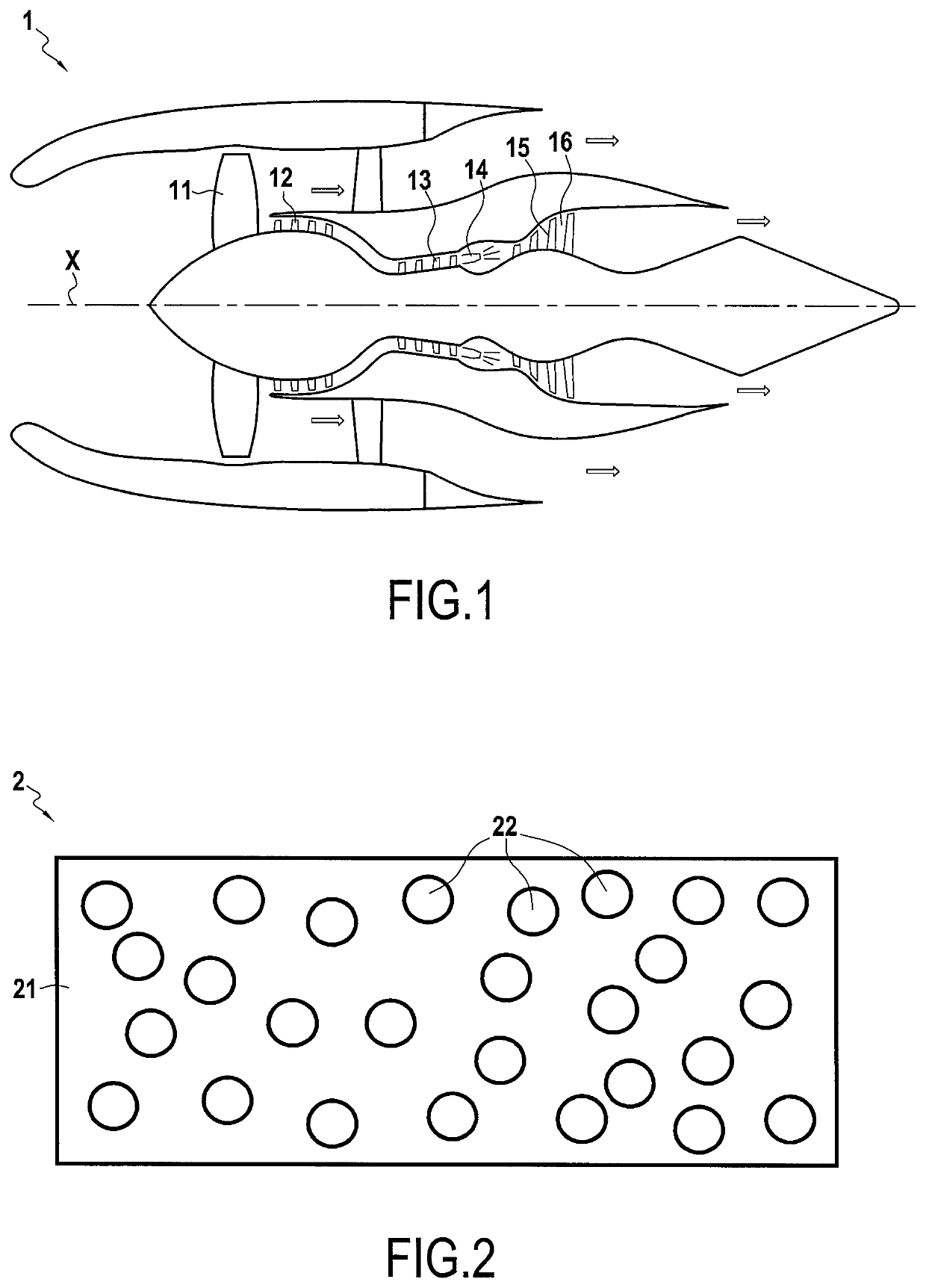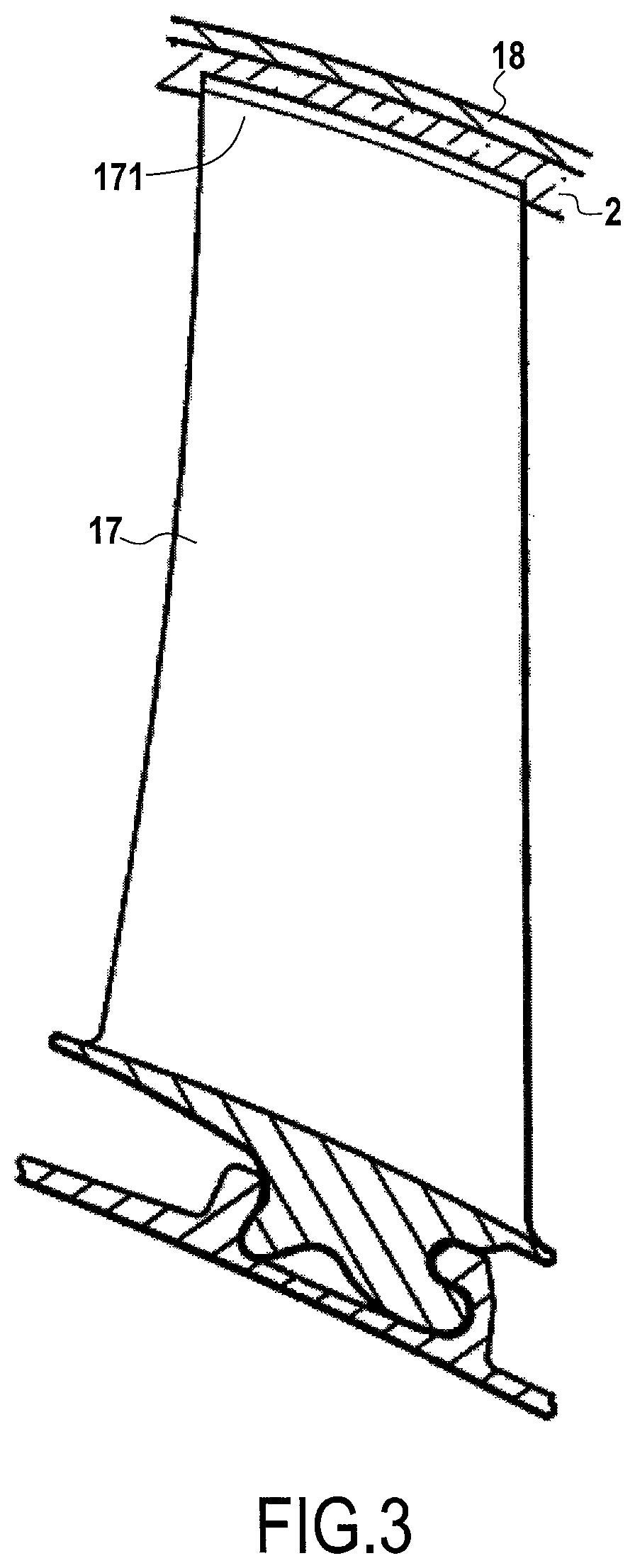Abradable coating for rotating blades of a turbomachine
- Summary
- Abstract
- Description
- Claims
- Application Information
AI Technical Summary
Benefits of technology
Problems solved by technology
Method used
Image
Examples
first embodiment
[0054] the matrix 21 is made of a first ceramic material, and the particles 22 are in a first ceramic material.
[0055]The first ceramic material has a dynamic viscosity greater than or equal to 1012 Pa·s at 1300° C., while the second ceramic material has a dynamic viscosity less than or equal to 102 Pa·s at 1300° C.
[0056]The dynamic viscosity is here measured with a Brookfield RVT viscometer equipped with a rotating mobile at 20 rpm or by a flow measurement.
[0057]The fact that the first ceramic material, for example, has a dynamic viscosity greater than 1012 Pa·s at 1300° C. allows the matrix 21 to maintain its mechanical properties, and thus allows the abradable coating 2 to withstand the very high temperature.
[0058]The fact that the second ceramic material has a dynamic viscosity less than or equal to 102 Pa·s at 1300° C. allows sufficiently weakening the matrix 21.
[0059]In addition, such a low viscosity of the second material allows the friction of the tip of the blading to smooth...
second embodiment
[0066] the matrix 21 is made of a first metal material, and the particles 22 are made of a second metal material.
[0067]The first metal material composing the matrix 21 has a melting temperature greater than 900° C., and preferably greater than 1000° C., and even more preferably greater than 1100° C., so as to maintain good mechanical properties and ensure the resistance of the abradable coating 2 at such temperatures.
[0068]The second metal material composing the particles 22 has, for its part, a melting temperature at least 50° C. less than the melting temperature of the first metal material.
[0069]Such a difference in melting temperature allows the particles 22 to switch into the liquid state upon contact between the tip of a blading and the abradable coating 2 under the effect of the increase in temperature, thus weakening the matrix 21 which remained solid.
[0070]Preferably, the second metal material has a melting temperature 50° C. to 200° C. lower than the melting temperature of ...
PUM
| Property | Measurement | Unit |
|---|---|---|
| Temperature | aaaaa | aaaaa |
| Fraction | aaaaa | aaaaa |
| Fraction | aaaaa | aaaaa |
Abstract
Description
Claims
Application Information
 Login to View More
Login to View More - R&D
- Intellectual Property
- Life Sciences
- Materials
- Tech Scout
- Unparalleled Data Quality
- Higher Quality Content
- 60% Fewer Hallucinations
Browse by: Latest US Patents, China's latest patents, Technical Efficacy Thesaurus, Application Domain, Technology Topic, Popular Technical Reports.
© 2025 PatSnap. All rights reserved.Legal|Privacy policy|Modern Slavery Act Transparency Statement|Sitemap|About US| Contact US: help@patsnap.com


